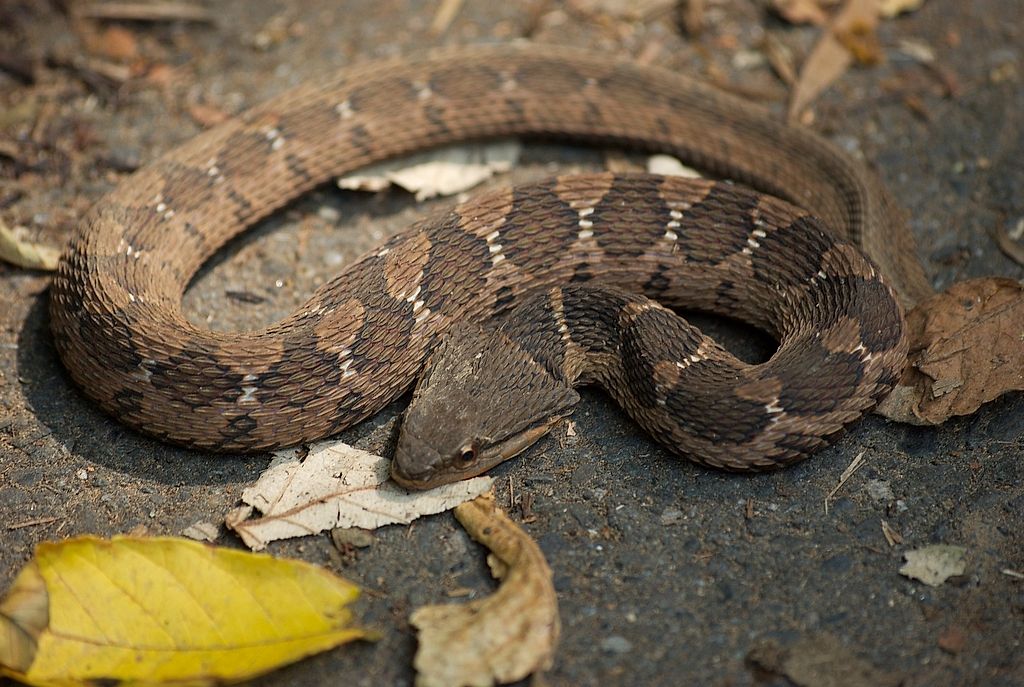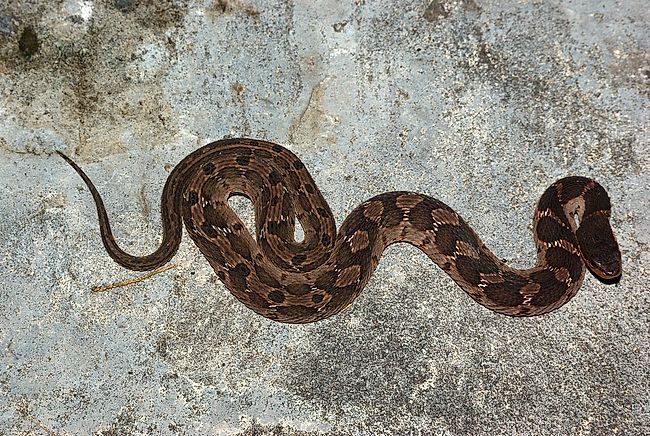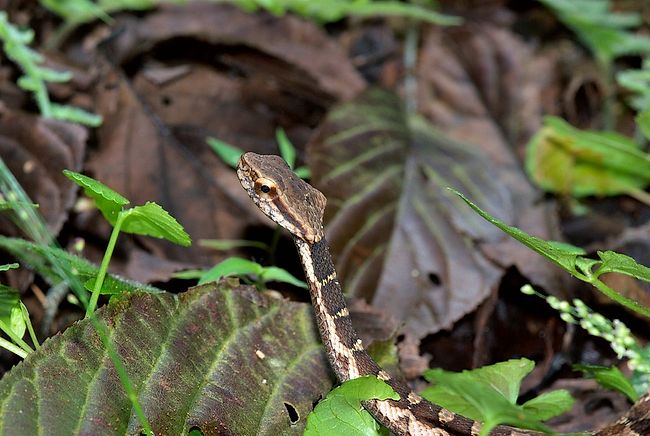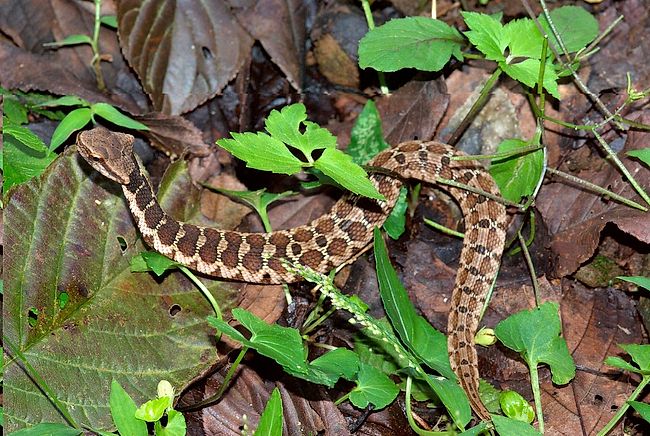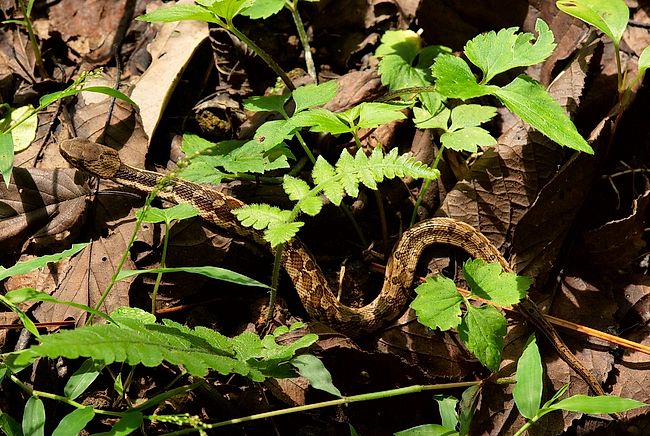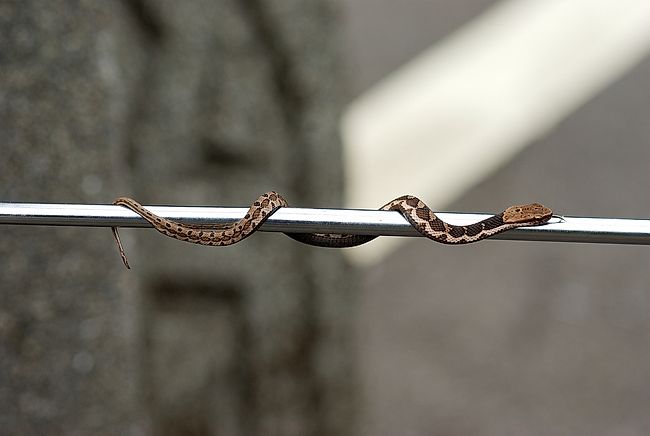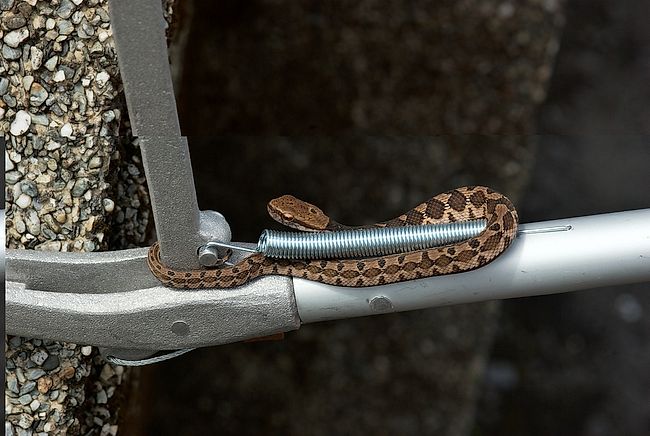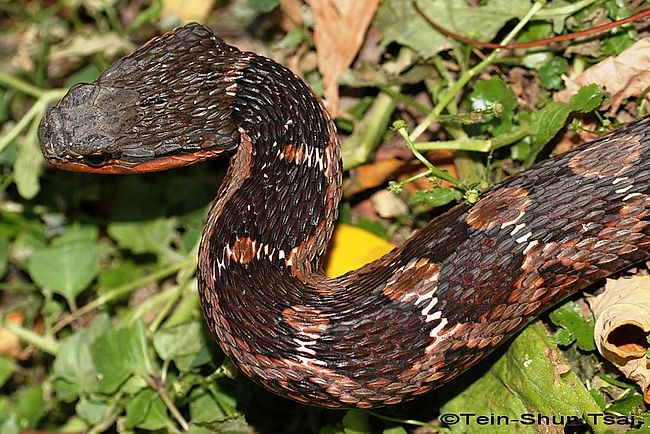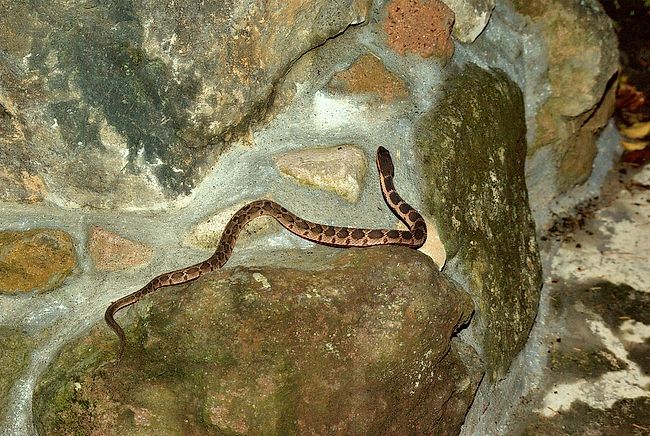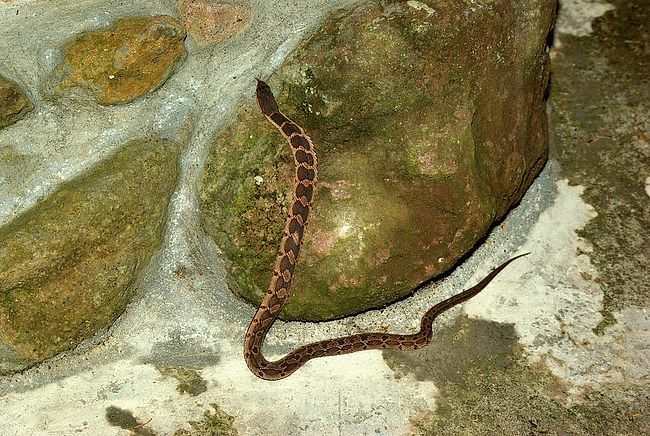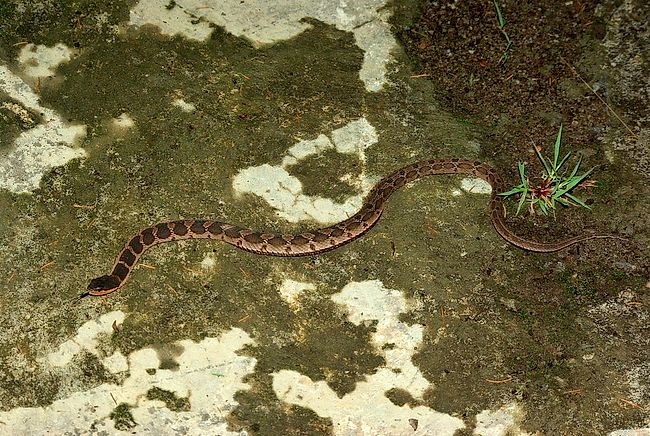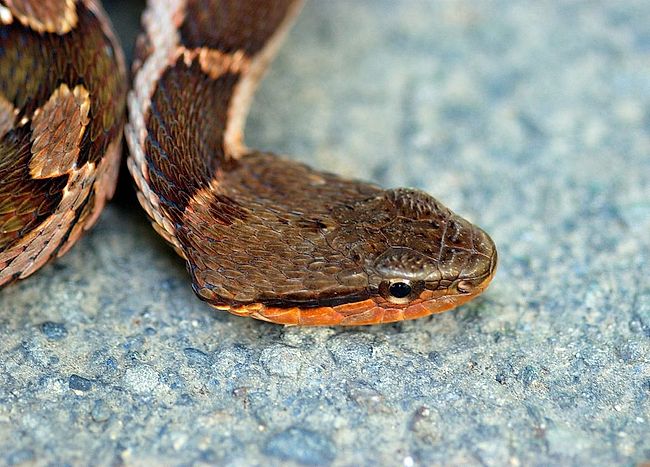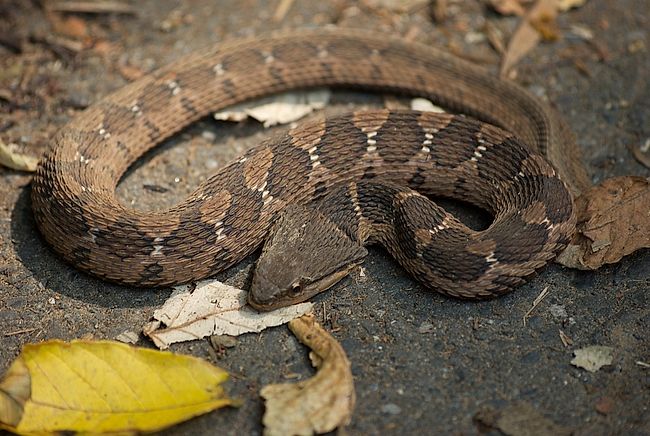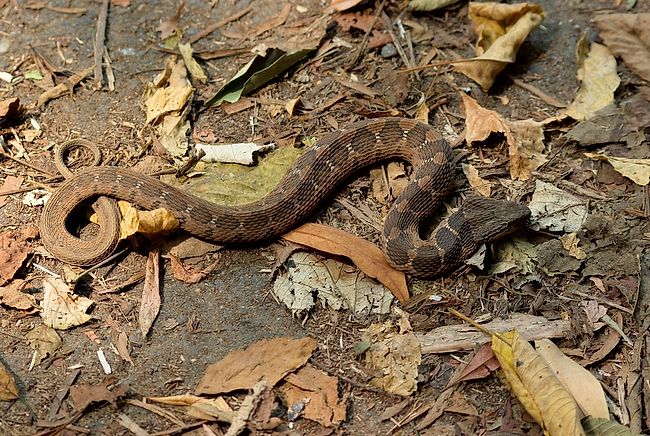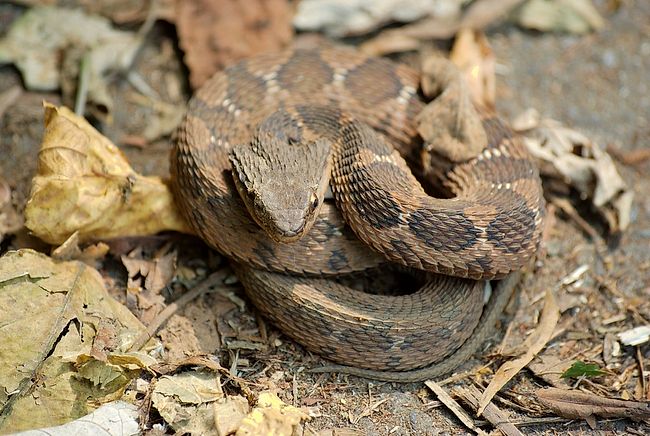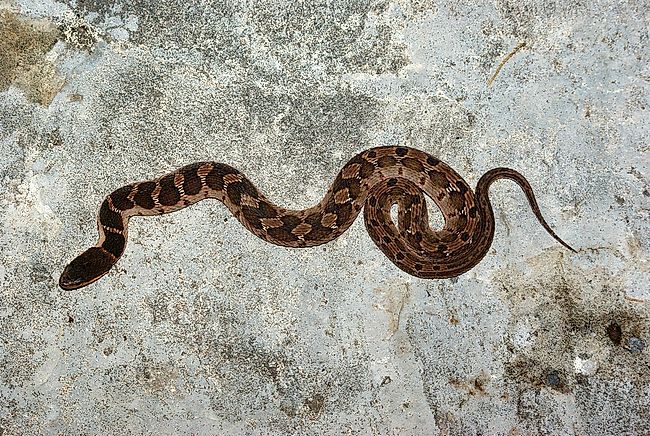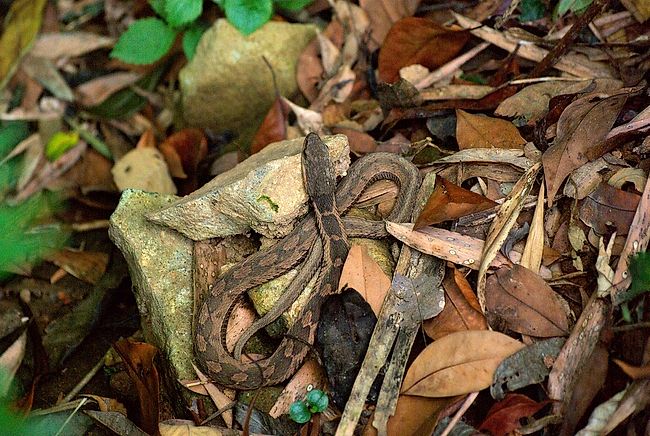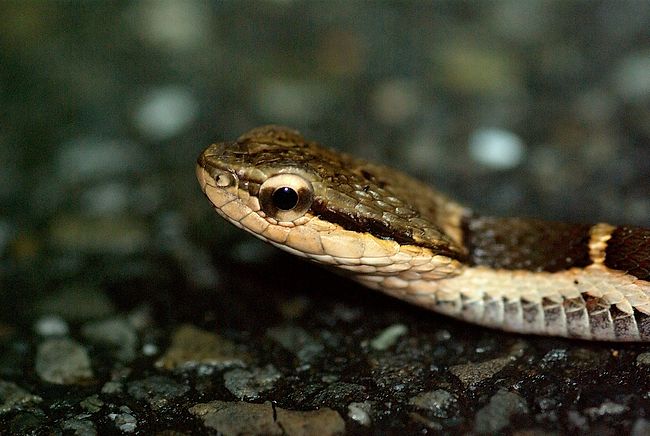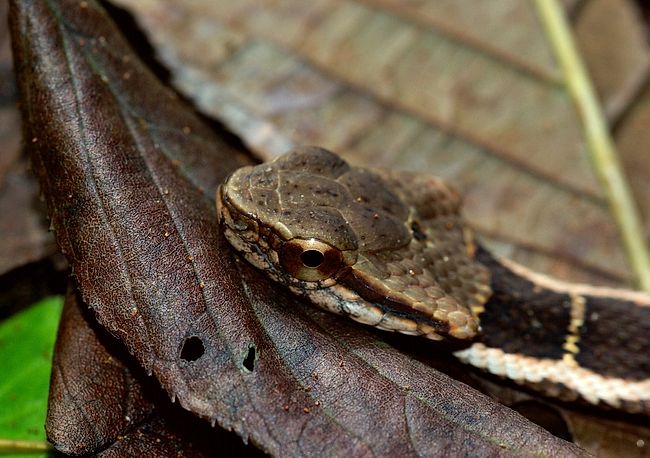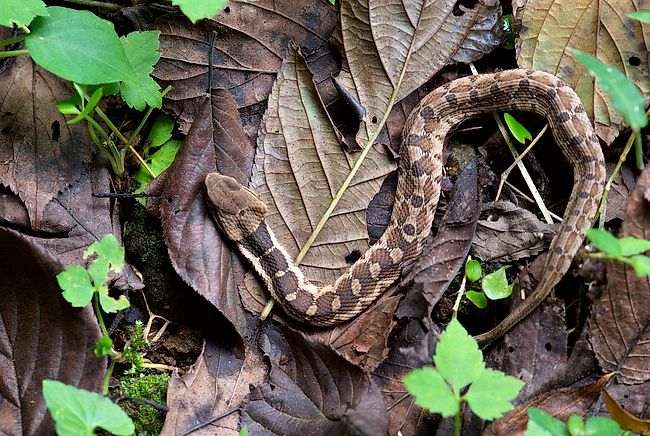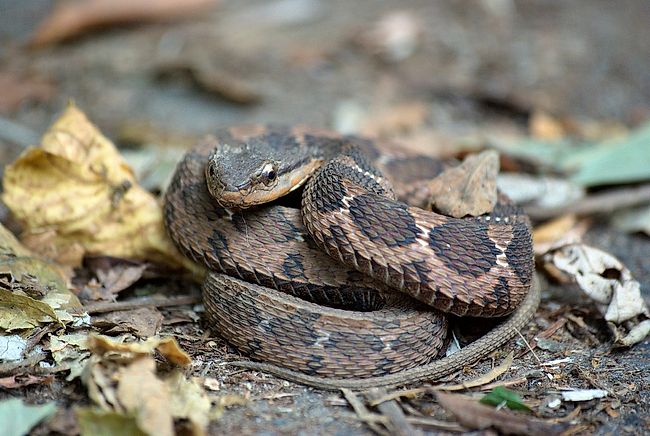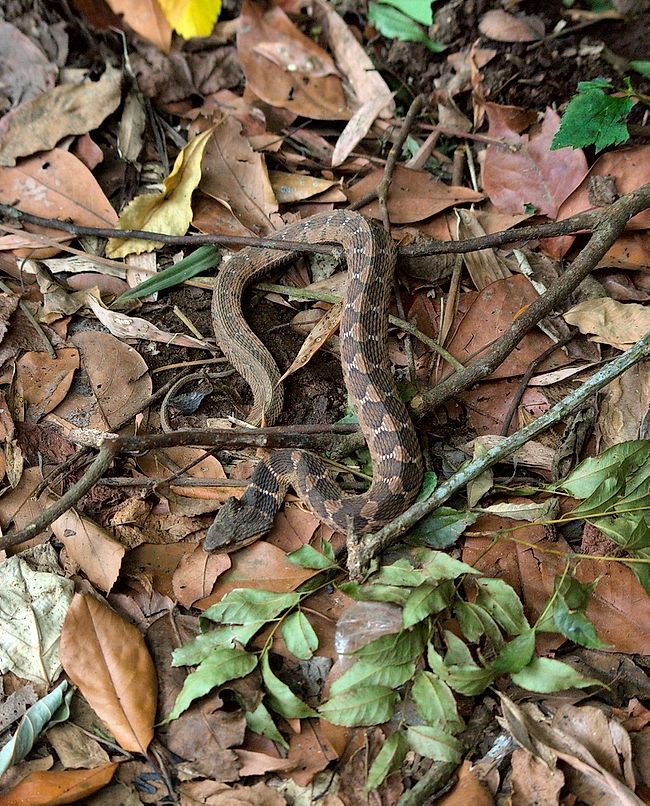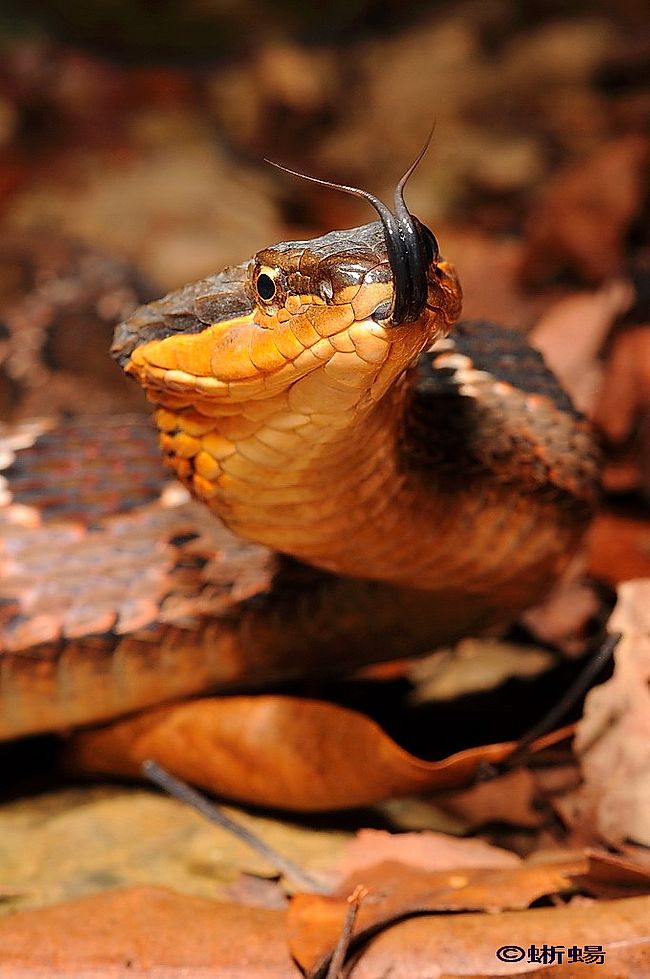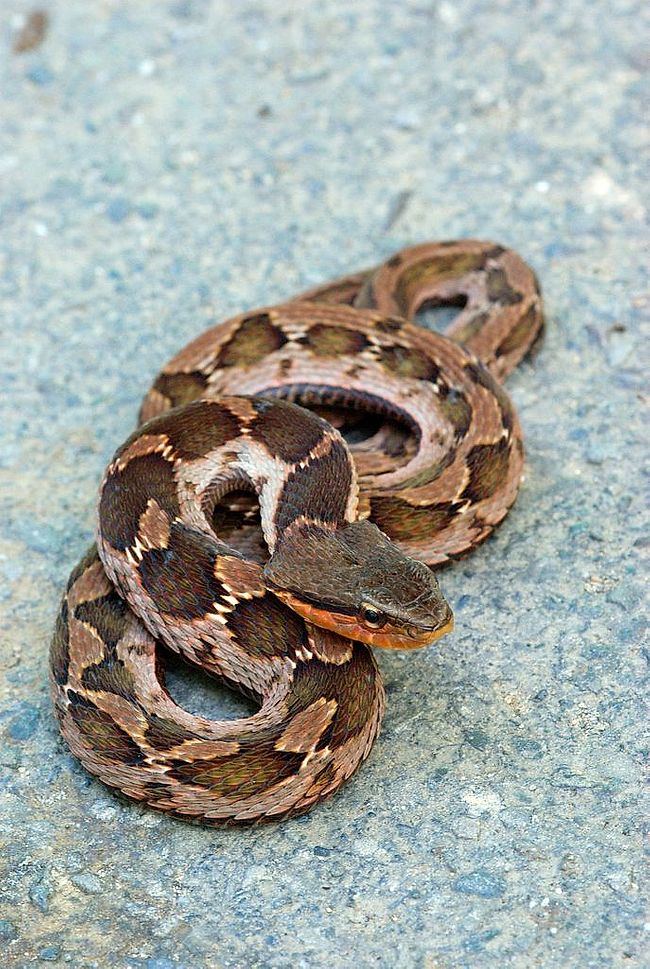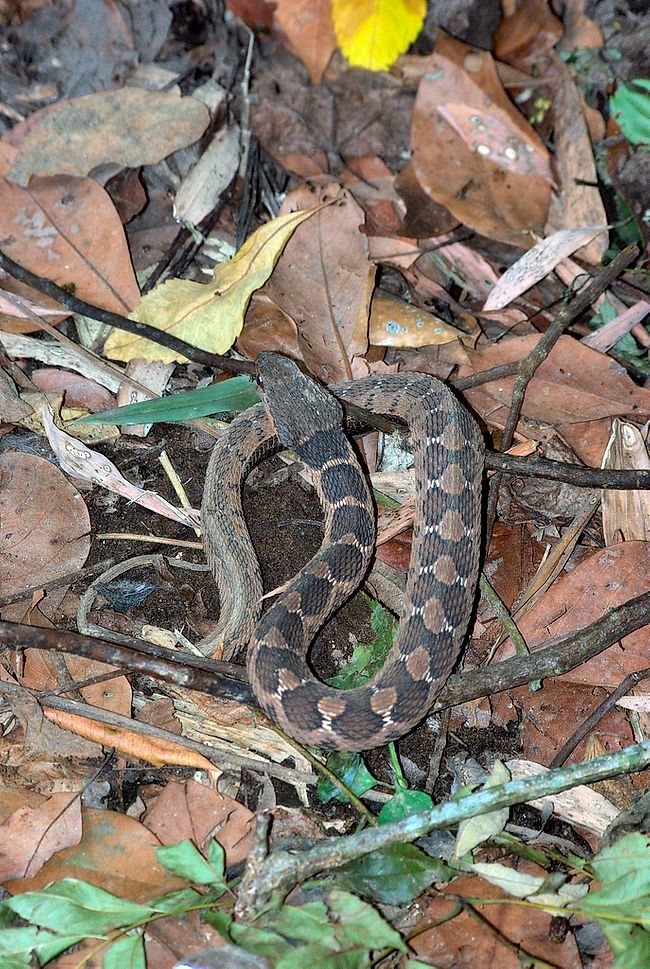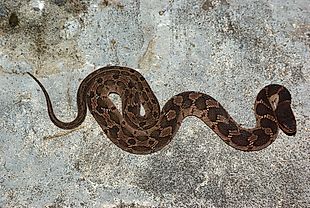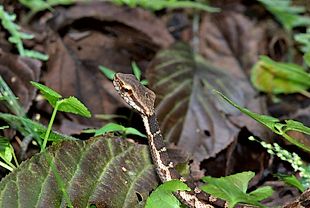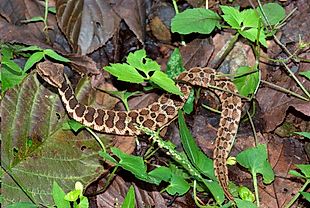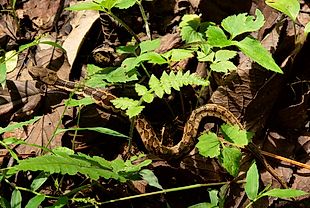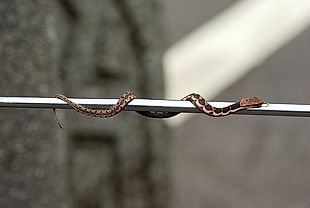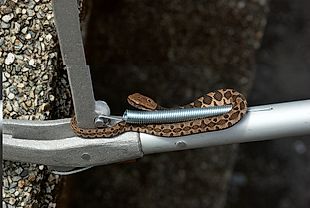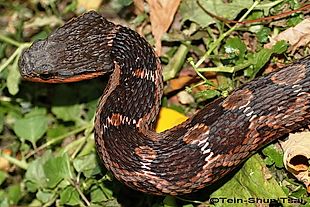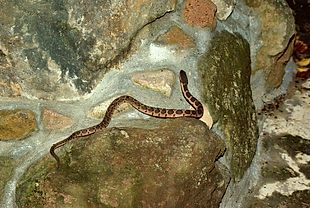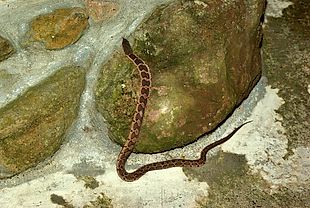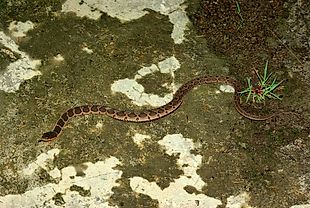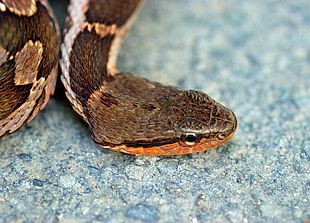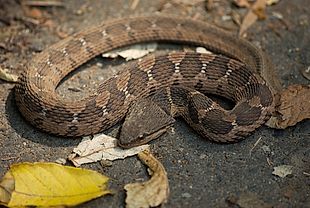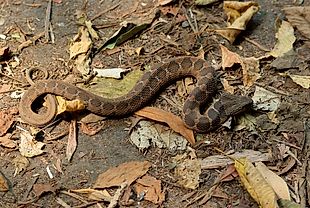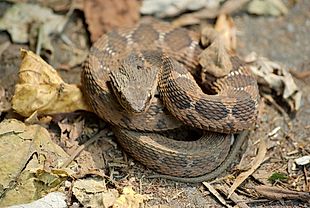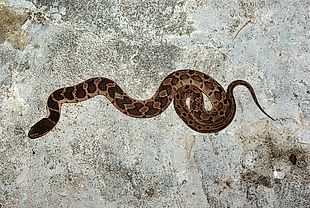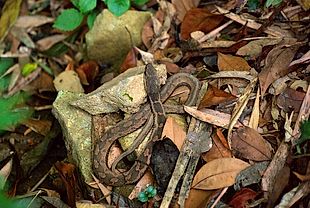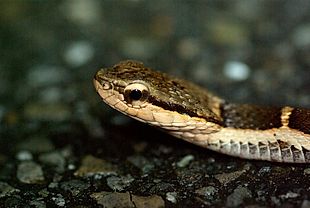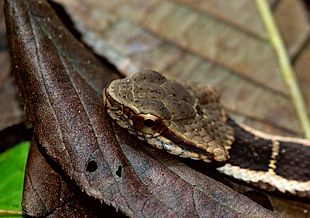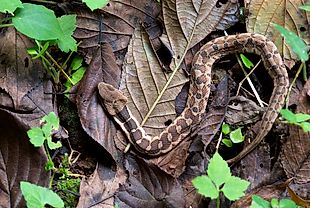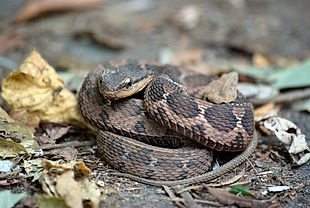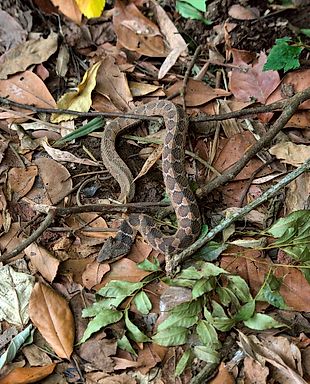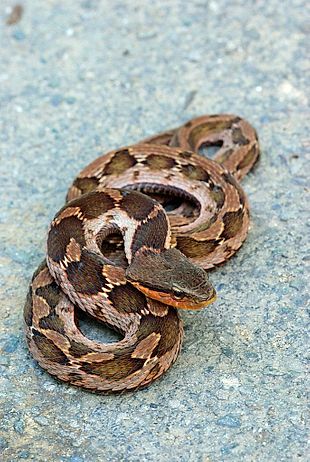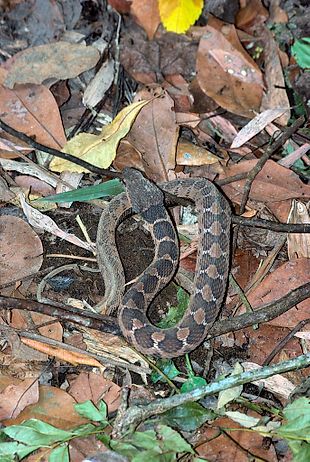Pseudagkistrodon rudis rudis
False Viper, False Habu
擬 龜殼花 (ni3gui1ke3hua1)
Status: Not Protected
Mildly venomous
Field Reports
Family
Colubridae, subfamily Natricinae
Max. length
120 cm
Occurrence in Taiwan
Low and medium elevations throughout Taiwan. Quite common.
Global Distribution
South China (Fujian, Yunnan, Sichuan, Guizhou, Hunan, Jiangxi, Zhejiang, Guangxi, Guangdong, Anhui, Hunan), Taiwan.
Description
Medium-sized snake; total length up to 120 cm. There are 19-25 (23 at mid-body) rows of
scales, which are heavily keeled. Head is broad, moderately triangular and
moderately separated from neck; body is stout, slightly compressed or
flattened; tail is moderately long. Eye is medium to large; iris is light
brown with scattered areas of black, while anterior and posterior quarters
of eye are dark brown, pupil is slightly oval to round, black, surrounded
by irregular ring of light tan. Tongue is large, dark gray blue, fork tips
light gray. Upper head is dark dirty brown to chocolate, with a prominent
line of demarcation where the brown of the upper head meets the light
brown, orange tinged side of head, extending from tip of nose along side
of head to neck. Dorsal shields of head are large, but not distinct due to
coloration and poorly developed sutures. The nuchal scales are heavily
keeled. Upper body is brown to gray brown, may be tinted with bronze,
interrupted by dark designs, variable in size, disposition and intensity
of pigmentation. The irregular designs crossing the vertebral line in
anterior half of body tend to lose continuity in the following part of
body where they are replaced by roughly circular, separated designs along
vertebral line. Other spots involving two to four scales occur on the
sides of the body, and the posterior ones may fuse to form longitudinal
lateral band. Ventral head is dirty white to dull orange gray. Ventral
body is variable, dull dirty orange at neck with scattered dark gray to
brown black pigment, overall color progressively darker posteriorly with
mottled or marbled appearance in posterior parts of body. Anal scale is
divided and subcaudals are paired.
Biology & Ecology
This diurnal or nocturnal rear-fanged (= opistoglyphous, see footnote (1))
snake is found on mountainous forest floors, bush- and grassland, or near
creeks. It feeds mainly on toads, but also on frogs, small snakes,
lizards, insects and earthworms. Females give birth to 12-27 young per
litter in late summer and fall; hatchlings measure 13-20 cm in total
length. When irritated and excited, it may make every effort to act or
appear as a venomous snake: the head and neck, or the entire body, may be
flattened as the snake coils up in defense; when flattened, the oval
head may take on a strong, definite triangular shape in an attempt to
mimic vipers.
Many members of the family Colubridae that are considered venomous are essentially
harmless to humans, because they either have small venom glands,
relatively weak venom, or an inefficient system for venom delivery. The venom of P.rudis is not well studied but a transcriptomic study found that P. rudis contains toxin-encoding genes that are homologous to front-fanged snakes. (Source)
Etymology
Pseudagkistrodon: from Greek "pseudes", "false", and "Agkistrodon", a genus of American pit vipers. The name Agkistrodon comes from the Greek words ankistron 'fishhook' and odon 'tooth' and is likely a reference to the fangs. (Source)
rudis is Latin for "rough, crude, unlearned".
The Chinese name 擬龜殼花 (ni3gui1ke3hua1) means "False Taiwan Habu", referring to
the sympatric pitviper Protobothrops mucrosquamatus which it appears to mimic.
Footnotes
(1) "Opisthoglyphous snakes are similar to aglyphous (fangless) snakes, but
possess weak venom, which is injected by means of a pair of enlarged teeth
at the back of the maxillae (upper jaw). These "fangs" typically point
backwards her than straight down, possess a groove which channels venom
into the prey, and are located roughly halfway back in the mouth, which
has led to the vernacular name of "rear-fanged snakes"". (Source)
Further Info











